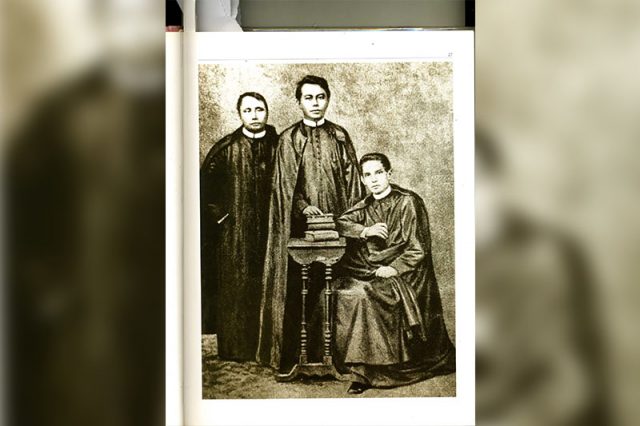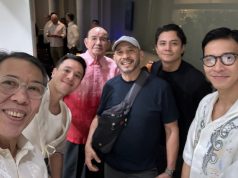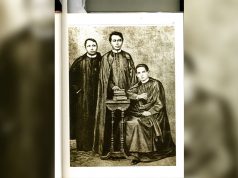
The search for GomBurZa is on.
An upcoming period film about the three martyred Filipino priests in the Spanish era announced it is holding a casting call to interested actors and talents through auditions.
Facebook page “Gomburza Casting” made the call on Tuesday, sharing that it needs an actor who can portray the character of Padre Jacinto Zamora and other “Filipino-looking” and “mestizo-looking” talents.
The character of Zamora was described as a “happy-go-lucky Indio priest wrongfully accused of treason.”
The actor must be between the 20s and 30s age range, has a “moreno” skin complexion and “must be willing to learn Spanish.”
Meanwhile, the Filipino-looking talents must be between their 20s to 50s age range and “must be willing to learn Spanish.”
The mestizo-looking talents, on the other hand, must be between the 20s and 50s age range and “must know how to speak Spanish.”
Those interested must e-mail their resume or curriculum vitae, recent photo, acting reel and audition video to [email protected] with the subject line “MAJOHA Auditions.”
The deadline for the submission is on October 25, 5 p.m.
Some noticed that the production crew used the term “MAJOHA,” which refers to a made-up term made by a “Pinoy Big Brother” teen housemate earlier this year.
“Disclaimer: *Sa MAJOHA ako nag-haha react,” a Facebook user wrote in the comments section.
Last April, PBB host Robi Domingo asked the teen housemates the following: “Ang tatlong Catholic priests na sina Mariano Gomez, Jose Burgos, Jacinto Zamora na hinatulan ng kamatayan noong panahon ng Kastila ay mas kilala sa tawag na…?”
The housemate who first touched the buzzer attempted to answer “MarJo,” an attempt to unite the first names of Gomez and Burgos.
The second contestant answered, “MaJoHa,” another attempt at combining the priests’ first names.
The term trended on social media and prompted calls to bring back Philippine history into the high school curriculum.
Meanwhile, the upcoming film about the martyred priests is produced by JesCom Productions.
JesCom refers to Jesuit Communications, the media arm of the Philippine province of the Society of Jesus.
“GomBurZa” is its second major motion picture after 2016’s “Ignacio de Loyola,” the biopic of Society of Jesus founder St. Ignatius of Loyola.
Among those behind the upcoming film include Venice International Film Festival Orrizonti Prize director Pepe Diokno, celebrated screenwriter Rody Vera, award-winning cinematographer Carlo Mendoza, and award-winning production designer Ericson Navarro.
According to JesCom executive director Rev. Fr. Emmanuel Alfonso, SJ, “GomBurZa” will tell the lives of the martyred priest and highlight their impact on the country’s political history.
He also said that the film will have a new and youthful approach since Diokno, a millennial, is at its helm.
“We want our film to speak to the young and to the world they live in today. It is only right then that they lead us in this project,” Alfonso said.
“GomBurZa” refers to the combination of the surnames of three Filipino secular priests Mariano Gomez de los Angeles (Gom), Jose Apolonio Burgos (Bur) and Jacinto Zamora (Za).
The three of them were accused, tried and sentenced to death through garrote by the Spanish authorities on Feb. 17, 1872 for supposedly instigating the mutiny in Cavite despite doubtful evidence.
The Cavite Mutiny, which happened on Jan. 20, 1872, was an uprising of Filipino soldiers and laborers who revolted against the Spaniards for voiding their exemption from the payment of tributes.
The incident prompted massive arrests against those who openly campaigned and supported liberal ideas, even those not connected with the mutiny.
These included the GomBurZa, who has long voiced out unequal treatment towards secular Filipino clergy in favor of the Spanish friars.
They were executed in the early morning of February 17 in Bagumbayan, now known as Rizal Park.
The incident contributed to Filipinos’ nationalist awakening and a desire to be liberated from colonial oppressors.









